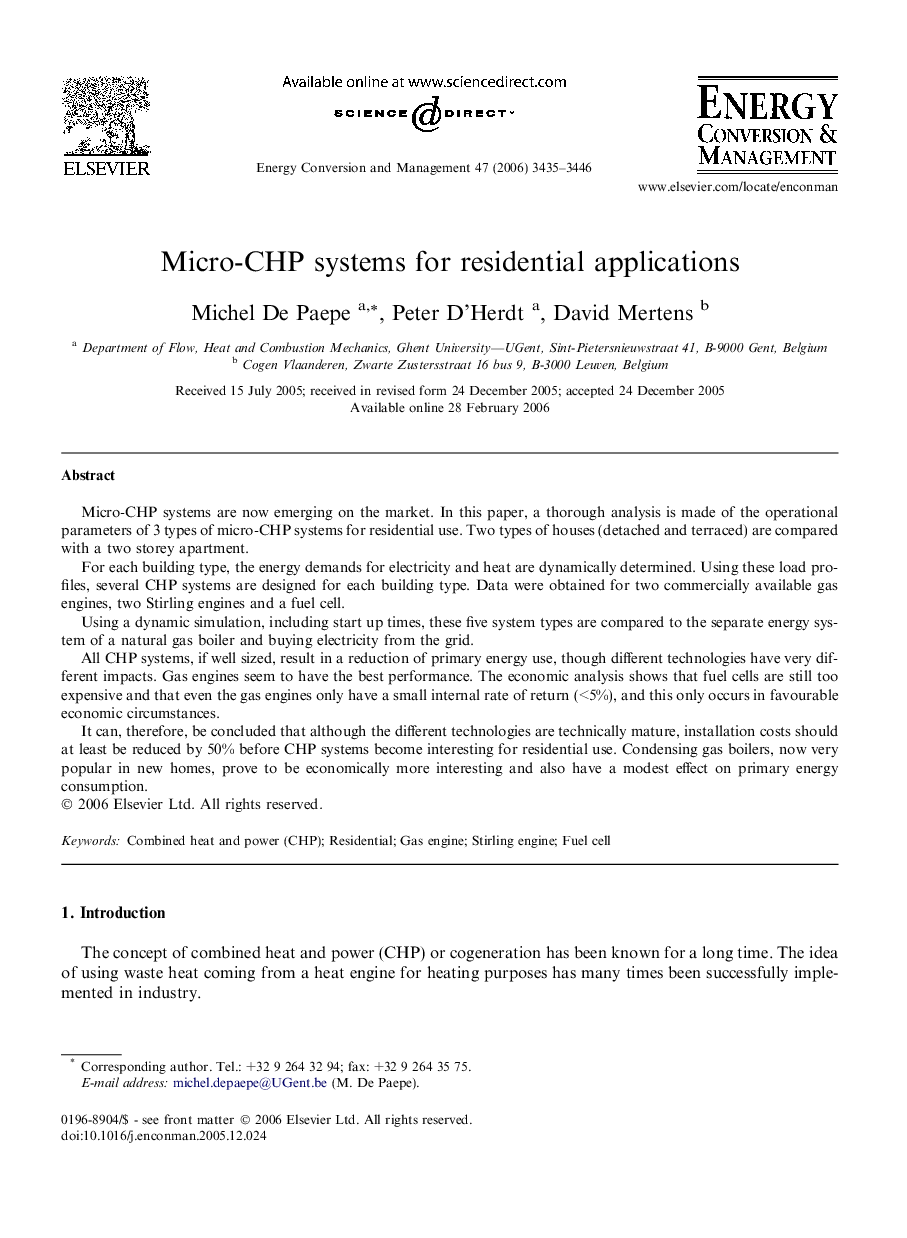| Article ID | Journal | Published Year | Pages | File Type |
|---|---|---|---|---|
| 762277 | Energy Conversion and Management | 2006 | 12 Pages |
Micro-CHP systems are now emerging on the market. In this paper, a thorough analysis is made of the operational parameters of 3 types of micro-CHP systems for residential use. Two types of houses (detached and terraced) are compared with a two storey apartment.For each building type, the energy demands for electricity and heat are dynamically determined. Using these load profiles, several CHP systems are designed for each building type. Data were obtained for two commercially available gas engines, two Stirling engines and a fuel cell.Using a dynamic simulation, including start up times, these five system types are compared to the separate energy system of a natural gas boiler and buying electricity from the grid.All CHP systems, if well sized, result in a reduction of primary energy use, though different technologies have very different impacts. Gas engines seem to have the best performance. The economic analysis shows that fuel cells are still too expensive and that even the gas engines only have a small internal rate of return (<5%), and this only occurs in favourable economic circumstances.It can, therefore, be concluded that although the different technologies are technically mature, installation costs should at least be reduced by 50% before CHP systems become interesting for residential use. Condensing gas boilers, now very popular in new homes, prove to be economically more interesting and also have a modest effect on primary energy consumption.
